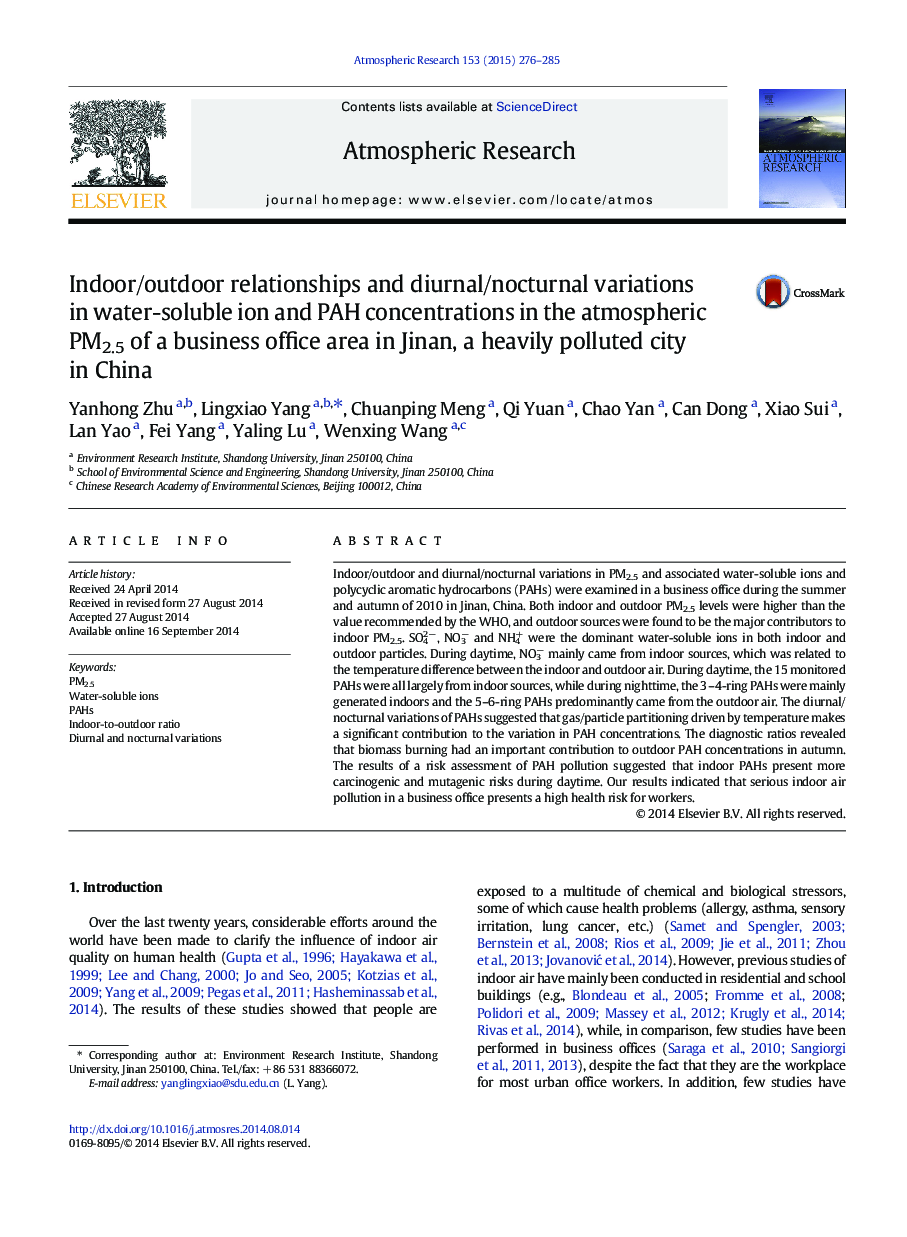| Article ID | Journal | Published Year | Pages | File Type |
|---|---|---|---|---|
| 6343401 | Atmospheric Research | 2015 | 10 Pages |
Abstract
Indoor/outdoor and diurnal/nocturnal variations in PM2.5 and associated water-soluble ions and polycyclic aromatic hydrocarbons (PAHs) were examined in a business office during the summer and autumn of 2010 in Jinan, China. Both indoor and outdoor PM2.5 levels were higher than the value recommended by the WHO, and outdoor sources were found to be the major contributors to indoor PM2.5. SO42â, NO3â and NH4+ were the dominant water-soluble ions in both indoor and outdoor particles. During daytime, NO3â mainly came from indoor sources, which was related to the temperature difference between the indoor and outdoor air. During daytime, the 15 monitored PAHs were all largely from indoor sources, while during nighttime, the 3Â -4-ring PAHs were mainly generated indoors and the 5-6-ring PAHs predominantly came from the outdoor air. The diurnal/nocturnal variations of PAHs suggested that gas/particle partitioning driven by temperature makes a significant contribution to the variation in PAH concentrations. The diagnostic ratios revealed that biomass burning had an important contribution to outdoor PAH concentrations in autumn. The results of a risk assessment of PAH pollution suggested that indoor PAHs present more carcinogenic and mutagenic risks during daytime. Our results indicated that serious indoor air pollution in a business office presents a high health risk for workers.
Related Topics
Physical Sciences and Engineering
Earth and Planetary Sciences
Atmospheric Science
Authors
Yanhong Zhu, Lingxiao Yang, Chuanping Meng, Qi Yuan, Chao Yan, Can Dong, Xiao Sui, Lan Yao, Fei Yang, Yaling Lu, Wenxing Wang,
